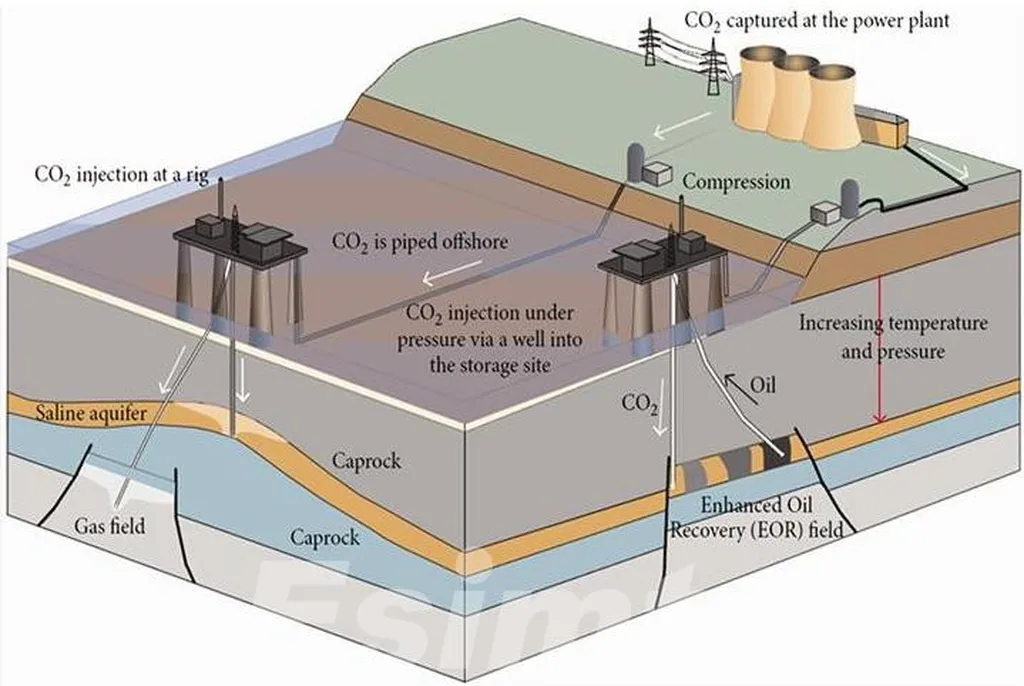In the quest to optimize carbon capture, utilization, and storage (CCUS) combined with enhanced oil recovery (EOR), a recent study published in the journal *Natural Gas Industry B* (formerly known as *Natural Gas Industry*) sheds light on the intricate chemical reactions that occur during CO2 injection into oil reservoirs. Led by Ali Satea from the State Key Laboratory of Oil and Gas Reservoir Geology and Exploitation at Southwest Petroleum University in China, and EBS Petroleum Company Limited in Iraq, the research provides a comprehensive review of how these reactions influence reservoir properties and, ultimately, the efficiency of CCUS-EOR projects.
The study highlights that temperature, pressure, pH, and fluid composition are key factors that govern mineral dissolution and precipitation, which in turn affect porosity, permeability, and CO2 storage. “Understanding these geochemical processes is crucial for predicting how CO2 injection will impact reservoir performance,” Satea explains. The research reveals that carbonate minerals, such as calcite and dolomite, are highly reactive under lower temperature conditions, enhancing dissolution and permeability. In contrast, silicate minerals like illite, kaolinite, quartz, and K-feldspar are relatively inert.
One of the significant findings is the formation of carbonic acid during CO2 injection, which promotes dissolution. However, secondary precipitation, particularly of clay minerals, can reduce pore connectivity and limit flow paths. “This dual effect of dissolution and precipitation can either enhance or hinder oil recovery and CO2 trapping,” Satea notes. Additionally, mineral transformation and salt precipitation can further modify reservoir characteristics, influencing both oil recovery and long-term CO2 storage.
The study emphasizes the importance of advanced experimental tools, such as Computed Tomography (CT) and Nuclear Magnetic Resonance (NMR) imaging, combined with geochemical modeling and reservoir simulation. These tools are essential for predicting petrophysical changes across scales, providing a theoretical foundation for integrating geochemical processes into CCUS-EOR design.
The implications of this research are profound for the energy sector. By understanding and managing these chemical reactions, companies can enhance the efficiency of CCUS-EOR projects, leading to improved oil recovery and more effective CO2 storage. This not only contributes to reducing greenhouse gas emissions but also offers economic benefits by extending the life of oil fields and improving their productivity.
As the energy sector continues to explore sustainable practices, this research provides valuable insights that could shape future developments in CCUS-EOR. By integrating geochemical processes into project design, companies can optimize their operations and contribute to a more sustainable energy future. The study serves as a technical guide for field applications, offering support for sustainable CO2 management in oil reservoirs.

